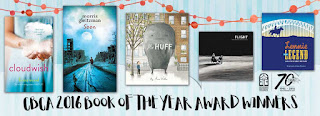Books - they form the
central part of my teaching practice. I use them to model reading strategies
during our daily read aloud session in class: inference, visualisation, questioning,
prediction, activating prior knowledge, connections (self, text and world). I use books to introduce different genres as well as grab the opportunity to read classics,
such as: The Wind in the Willows, Watership Down, Grimms’ Fairy Tales, The
Little Prince and Charlotte’s Web.
Our small group reading sessions
enable students of similar reading levels to practice their pace, fluency and
expression as they give constructive feedback to their peers. Books connect me
to my non-independent readers through working with them in small groups to increase
their confidence in hearing their voices as they read aloud.
I create a library of topical
books to support our inquiry project unit, whether it is a science, history or
geography topic. We have yearly class subscriptions to the excellent CSIRO
magazine, ‘Double Helix’ and ‘Historicool’. These magazines always provide
interesting topics for conversation during our recess and lunch eating times.
But, using books to
inspire students to write through the visual use of writing seeds is one of my
favourite ways to use books. These are two of my favourite picture books to
inspire creativity.
‘If’ by Sarah Perry, is
a surreal book of watercolours where fish morph into leaves, butterflies form
clothes, dogs are mountains, caterpillars are toothpaste and whales live in
outer space. It takes a matter of seconds before students are coming up with
their own ‘if’s that are then used to brainstorm the first draft of a story.
Students’ pictures also serve to be writing seeds for other students.

‘Journey’ by Aaron Becker, whose website describes this best as: ‘The adventures of a young girl who escapes the boredom of home to find a magical realm in which she can control her own destiny with her imagination.’ The book has no text, enabling readers to interpret each page without being led. Some pages are of a single image while others have several images conveying action. I let students choose a page to use as a writing seed and also copy pages for students to work in pairs to write their own text. This encourages them to think about the action before and after the illustration.
Helen Rothwell is a Year 6 teacher and the
Tasmanian judge for the Eve Pownall category in the 2017/18 CBCA Book of the
Year Awards.





